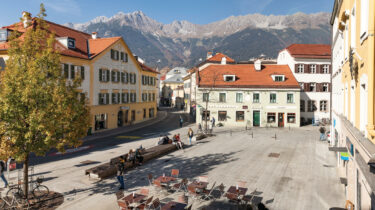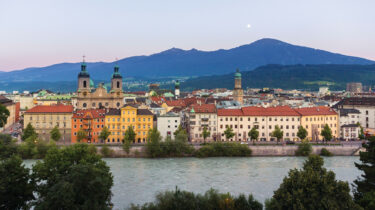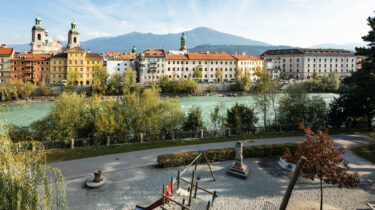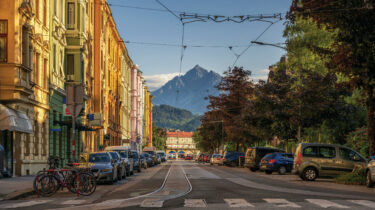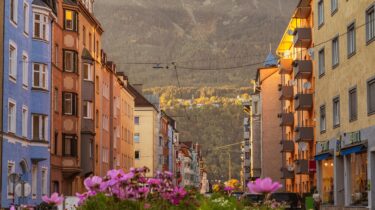Innsbruck means more: a look behind the scenes at its neighbourhoods, people and stories
Last updated on 14.06.2022
Innsbruck means one thing above all: more. The capital of Tyrol is so much more than the photos of brightly coloured houses in the Mariahilf district, or the views of the pulsating city from up on the Nordkette range, or even the 2,657 tiles of the Golden Roof: if you really want to get to know Innsbruck, you have to explore its different quarters. The people who live there can tell the stories that life writes, and that too is our aim: over the next few weeks we will be taking a look behind the scenes and into the businesses, cafés and haunts of the people who live in these areas, from A to Z. But first, let’s dig out a city map and take a closer look at some of Innsbruck’s most famous districts…
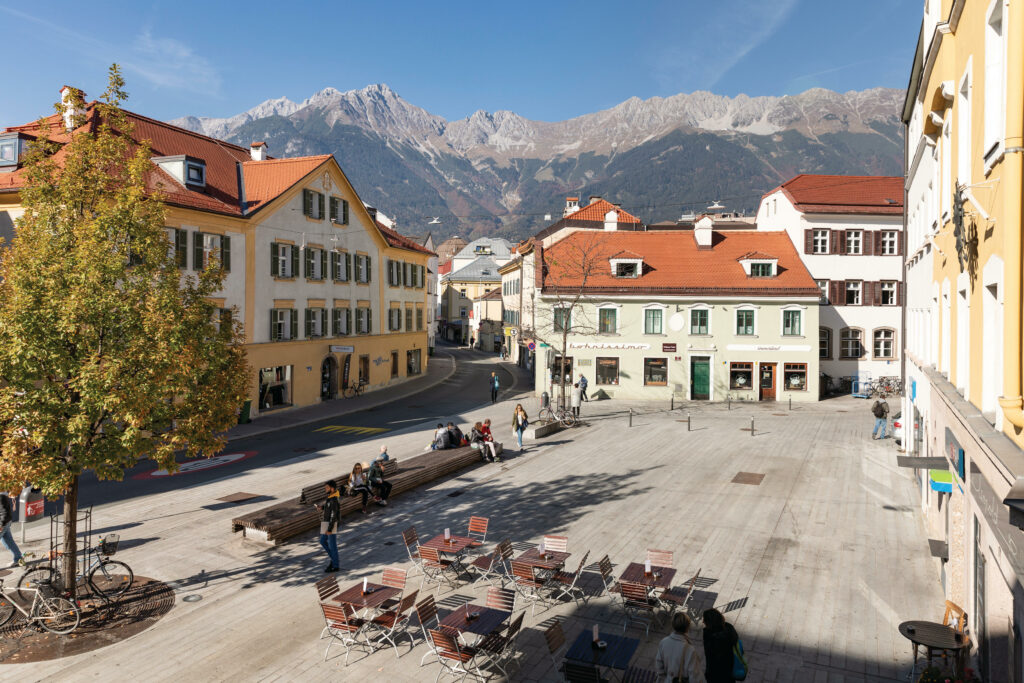
Wilten – genuine and traditional
Let’s start our walk in Wilten. Traditional handicraft businesses can be found everywhere here, from the centuries-old bell foundry, still run by the Grassmayr family, to the local costume manufacturers and a shop specialising in modern decorative jewellery. The local restaurateurs are also always searching for something special and are sure to leave no culinary desire unmet, with one of the city’s finest restaurants, the Glasmalerei, to be found in the old glassworks. The Wiltener Platzl gives it all a village square atmosphere: here, on Saturdays, locals still go shopping at the farmers’ market. The Sill Gorge and the banks of the River Inn are also ideal for a leisurely stroll.
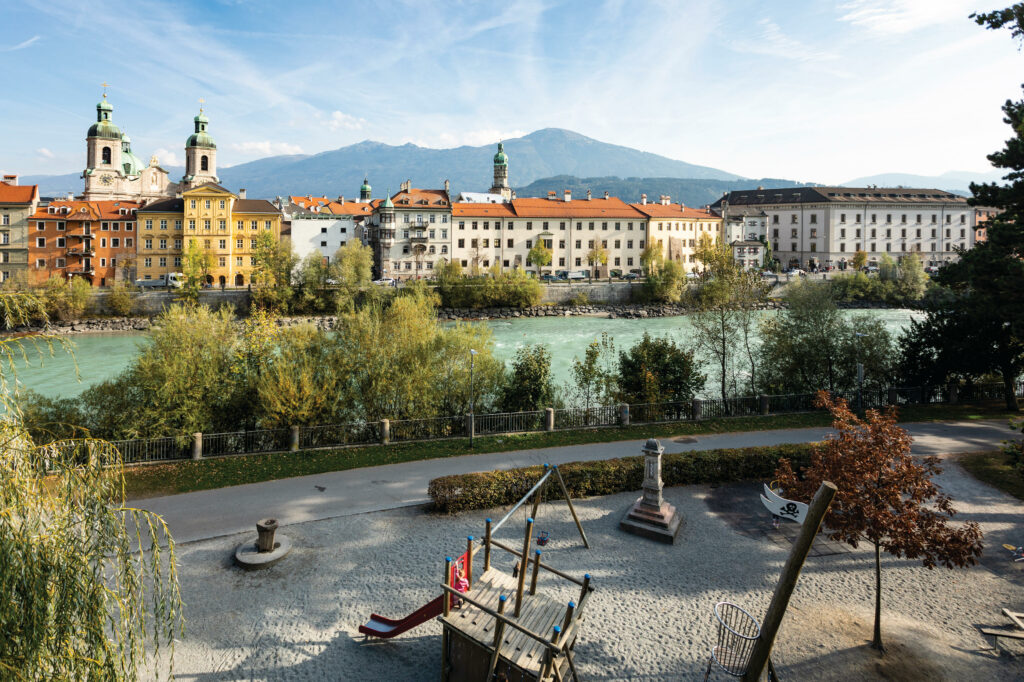
St. Nikolaus and Mariahilf – the in-district
St. Nikolaus is regarded as the oldest of the city’s districts and was once known as “Anpruggen”, meaning “at the bridge”. For some years now, numerous creative shops and hip cafés have found a home on the Innstrasse among the colourful rows of houses. You can find almost anything here, from tasty breakfasts to musical treats. Inconspicuous from the outside, once inside the Walde soap factory (one of Austria’s oldest family businesses) is an Eldorado for candle collectors and soap lovers. Just across the street is the Waltherpark: while modest at first glance, it hosts special events and highlights throughout the year.

Hötting – village charm
Once Austria’s largest village until it was incorporated into the city of Innsbruck, Hötting is today the district that best preserves and lives its traditions. This is particularly evident from its numerous associations, old farmhouses and rustic inns, while the well-known Hötting shooting range is also located here. The locals not only speak a dialect typical of the quarter, but also observe original customs such as the “Höttinger Nudl”, a light-hearted revue of the year published each Shrove Tuesday. As the area lies almost entirely on a slope, it offers wonderful views of Innsbruck’s city centre and the old town. Many decades ago, Mick Jagger of Rolling Stones fame is said to have enjoyed dinner in Hötting with its fabulous city panorama.

Saggen – both historic and hip
The name “Saggen” supposedly comes from the word for “sack”, owing to the district’s closed shape. But its beautiful historic villas – it is nicknamed “Innsbruck’s villa quarter” – resemble anything but sacks. It is not only the magnificent houses that typify this part of town, however, but also the viaduct arches and their occupants that range from hip nightclubs to barista stores. And if the arches could speak, they would have many a story to tell, stories that can only be experienced in Innsbruck. A walk through Saggen will also inevitably lead past one or more houses owned by the Sisters of Mercy – a sanatorium, kindergartens, schools and even a farm.
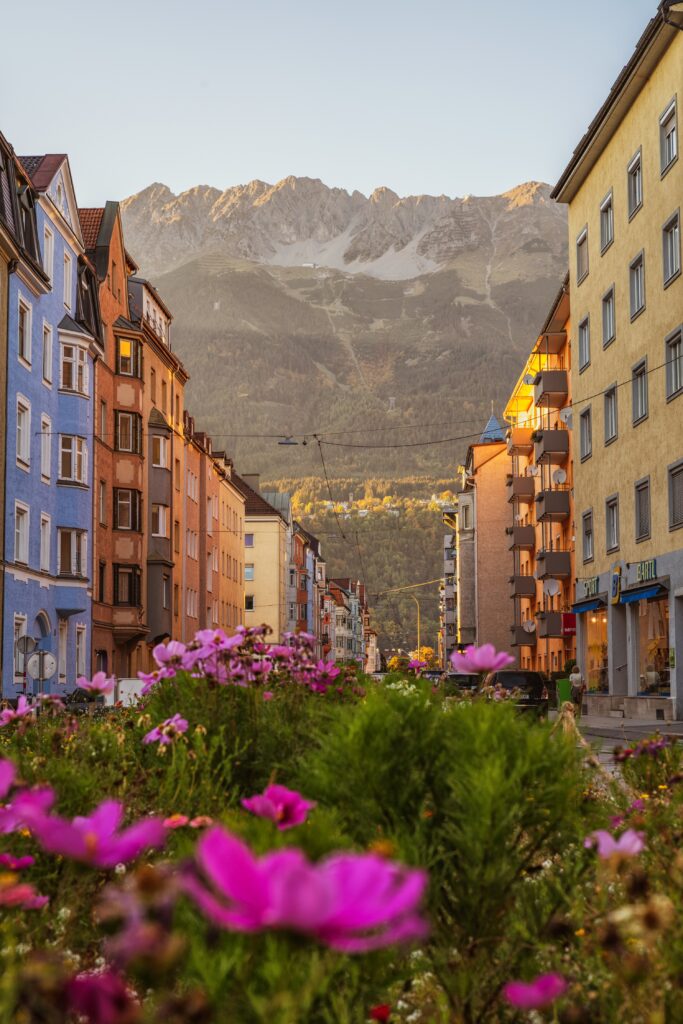
Pradl – authentic and down-to-earth
A stroll through the district of Pradl lets you sense a very special atmosphere: it is matter-of-fact yet with a highly distinctive identity. More broadly, Pradl also includes the locality of Amras, whose rustic farmhouses lend an even more down-to-earth character to this part of town. Where once the lake known as the Amraser See was an inviting place for a refreshing dip, the DEZ shopping centre now entices locals and visitors alike to indulge in a shopping spree. The central Pradler Strasse is lined by a vibrant array of original shops, while the Rapoldi Park or the Pradl Parish Church are also pleasant places to spend some time. Finally, the Olympiaworld sports facility is an integral part of the district, the venue for numerous interesting events.
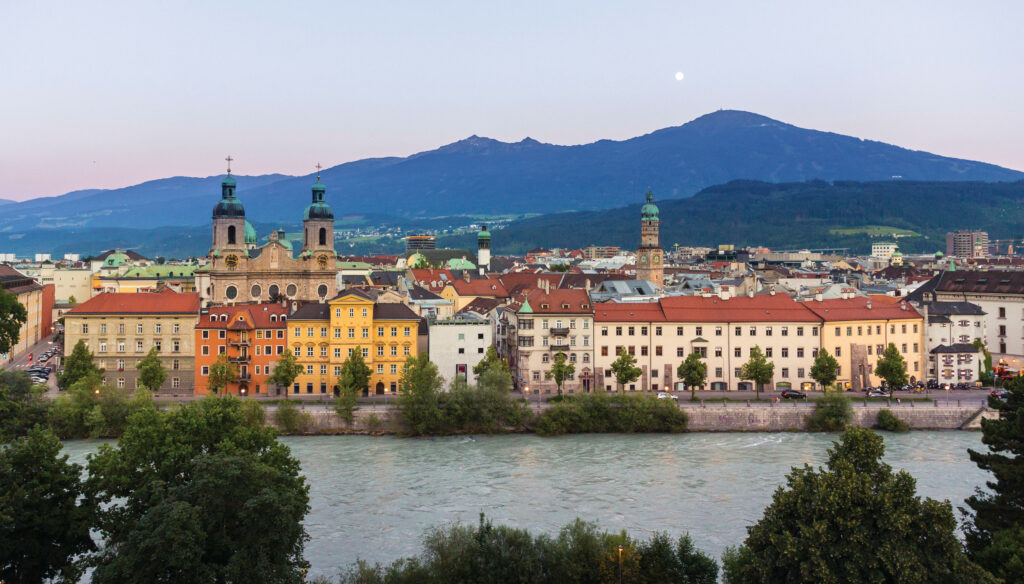
The city centre and the old town– old but gold
We would of course also like to mention the “classic” district, namely Innsbruck’s city centre with its charming old town. Away from the Maria-Theresien-Strasse, a boulevard that mixes the historic with the modern, or the old town with its famous sites, many a story is waiting to be told in the numerous side streets and hidden courtyards. Every waiter – whether in a cocktail bar or a staid old coffee house – has a great repertoire of anecdotes. A veritable institution among all these venues is the Treibhaus in the Angerzellgasse, for decades both a restaurant and a venue for a wide variety of art forms, that now enjoys true cult status.
In the words of many who know the city, “Innsbruck is a small town with a big city attitude”. And it’s true: hardly anywhere else can you find so many little stories that have such a big impact. One thing that is only possible in Innsbruck: you can keep the mountains in sight from almost any point in the city while managing to enter a completely different world in just a few minutes. We are looking forward to seeing where our city strolls will take us in the coming weeks. Our motto: always follow the stories.
About Innsbruck Tourismus
Innsbruck Tourismus is the official destination management organisation for the Innsbruck region, encompassing the capital of Tyrol and over 40 localities in the surrounding area, from the Inntal valley to the Mieming Plateau via Kühtai and as far as the Sellraintal valley. With almost 3.5 million overnight stays (as of 2019), the Innsbruck region is one of Austria’s largest tourism institutions – a unique symbiosis of pulsating urban space and fascinating Alpine world. The vibrant city atmosphere and sightseeing highlights are just a stone’s throw from your next biking or hiking tour, your next ski adventure or winter walk. The Welcome Card, free for visitors, is the key to the region’s boundless opportunities: public transport, usable at no cost, means that the area’s numerous highlights can be enjoyed both sustainably and comfortably. Visitor enjoyment is the focus of the thoughts and actions of each of the organisation’s 90 or so staff: they pass on their passion and enthusiasm for this alpine-urban space to guests, ensuring unforgettable holiday experiences for all in harmony with both people and nature. With a total of twelve tourist information offices, Innsbruck Tourismus can stay close to visitors, be right in the action and keep a finger on the pulse of events – a true hub for the authentic stories and personal impressions of local characters that can be found on the popular blog and social media channels at #myinnsbruck.
Further links
Blog: www.innsbruck.info/blog
Facebook: www.facebook.com/Innsbruck
Instagram: www.instagram.com/innsbrucktourism
Twitter: twitter.com/InnsbruckTVB
YouTube: https://www.youtube.com/user/InnsbruckTVB
Pinterest: www.pinterest.at/innsbrucktvb/_created

